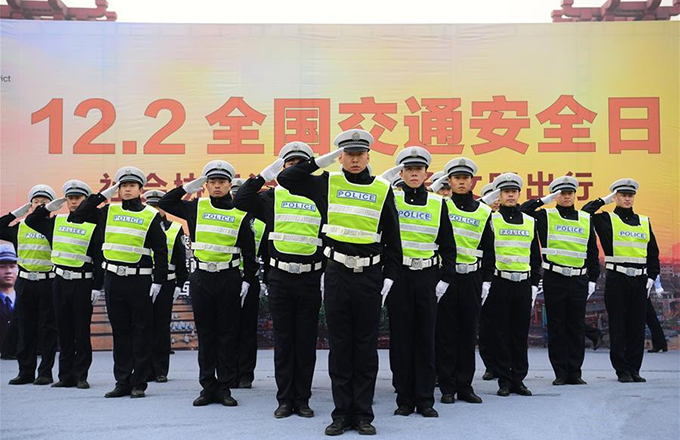China’s Belt and Road Initiative from Latvia’s perspective
Outside China, OBOR initiative often is understood - as China’s unilateral ambition to dominate Eurasian affairs. Whereas in Latvia, OBOR is considered, as a collaborative partnership, which provides a practical opportunityfora small country to forge and enhance bilateral cooperation and build practical mechanisms in multilateral cooperation development with other countries.
Latvia, with the external border of the European Union with Russian Federation and Republic of Belarus, is ideally positioned to act as the facilitator in providing access for land-locked countries and regions to the Baltic Sea, as well as hinterland connections across the entire Eurasian continent.
Despite fierce competition and challenging geopolitical situation, cargo turnover in Latvian ports in 2016 reached 63.1 million tons representing almost 20% of all the cargo volume handled in the Baltic Sea. More than 47 million tons of cargo were transported by railways, ranking Latvian Railways amongst the 5th largest railway service provider in the European Union (only behind Germany, Poland, Austria and Sweden). Also, container volume handled in Latvian terminals continued to increase by 8% in 2016, reaching a new record of 377,400 TEU, despite the continued backdrop of the Russian sanctions.
Notable growth continues to be achieved in containerizedcargo volumes transported by railways from Baltic States to Kazakhstan and Central Asia. The number of containers transportedby Latvian Railways hasincreased by 108% and the number of containers sent to Latvia has increased by 93%.
From rail to sea transportation, also Latvian aviation sector is gradually establishing dominating presence in North Europe. Riga International Airport for many years has emerge as the hub for the entire Baltic region. In 2016 airport handled 5.4 million passengers which is 4.7% more than in 2015. Today Riga airport is offering up to 70 destinations in winter and up to 90 in the summer.The airport has completed terminal expansion phase 5, allowing it to handle 7-10 million passengers per annum, as well as to accommodate large aircraft, which is one of the key preconditions for long-haul flight development.
Today the national carrier Air Baltic offers around 60 destinationsfromRiga Airport and in 2016 Air Baltic handled 2,89 million passengers, which is 10% more than in 2015.Latvia is interested to cooperate with OBOR countries andChineseairlines by offer feeder flights connections across Air Baltic’s network via Riga International Airport.
Furthermore, Latvia’s role in OBOR is further reinforced by thirteen Chineseair carriers who regularly use Latvian air space for China-Europe flights, a growth of 9.1% compared to 2015, contributing 10% of the revenues for Latvian Air Navigation Services.
This strong performance in transport and logisticsaffirms thatLatvia is the clear leader in transport and logistics amongst the three Baltic States, and that country is ideally placed to become China’s transport and logistics centre for North Europe.
To push forward cooperation, Latvia has accelerated bilateral and multilateral cooperation. In 2016 Latvia organised and hosted the 1stChina-Central and Eastern Europe Countries 16+1 Transport ministers meeting and established the China-CEEC 16+1 Logistics Secretariat in Riga.
Also, the adoption of China-CEEC 16+1 Riga Guidelines set a tone – that transport and logistics – is one of the cornerstone cooperation areas for all participants of this framework. The 5th China-CEEC 16+1 Prime Ministers Summit which was held in Riga on November 5, 2017 and it was success not only in terms of the documents signed, but also in terms of practical results delivered.
In just under a year, Latvia has concluded several important cooperation documents with China, including a Memorandum of Understanding on Port and Harbor Industrial Park cooperation with National Development and Reform Commission, Aeronautical Authorities, as well as several Memorandums with Chinese enterprises. These documents have defined the scope and established the priorities for Sino-Latvian cooperation, whereby Latvia’s principal interests are to cooperate in aviation, maritime and port, railways and industrial park developments.
Besides bilateral and multilateral cooperation, Latvia seeks to set up trilateral cooperation mechanismswith China and the neighboring land-locked country Belarus- to connect Chinese-Belarussian Industrial Park “Great Stone” with Latvian ports.
A notable and important milestone was achieved on November 5, 2016, whenYiwu – Riga container train connected the Pacific Ocean with Baltic Sea for the first time, travelling from China-Russia border (Manzhouli) to Riga over 7500 km in record time: 7 days and 9 hours, with total distance of 11,000 km completed in 12 days. This train made not only history, but also unleashed the potential for regular container train organisation between China-Europe via Latvia and vice versa.
Besides establishing direct rail-links, Latvia is also developing air cargo cooperation. Latvian Post in cooperation with SF Express has already organised first trial shipment of parcels. Such cooperationconfirms that e-commerce needs for parcel shipments from China to Europe, Russia, Belarus and Ukraine can be efficiently handled via Latvia.
Also, this year the national carrier Air Baltic made the most complicated charter flight by carrying the National Ice Hockey team to participate in five games in Russia and one in Beijing. This cooperation gave Air Baltic Corporationa practical experience in understanding the procedures and necessary formalities to develop charter flights to China.
These practical results together with high-level dialogue, pragmatic exchanges and consultations, are cementing strong foundation for future collaborations. Yet, several problems and impediments in the cooperation development remain.
Even though Latvia is the closest European Union country to China (only separated by Russian Federation), large distance separates Latvia and China, not only in terms of geographic distance, but also in terms of our understanding of each other. There is imbedded contradiction in two-way understandings and more time is required to align cooperation motives to address the respective interests.
Latvia recognises thatChina is interested to build and develop large infrastructure projects and to support its own industry and enterprises by bringing a new momentum to the connectivity development across Eurasia. Whereas Latvia’s principal interest lies in the ability to continue servicing large transit cargo flows, as well as accommodating new flows bydiversifying developments and creating new industrial production capacity at home.
In fact, this may not be viewed as a contradiction, but instead an opportunity! As result, compromises need to be made by both sides to achieve mutual development targets.
To say the least, OBOR initiative is the invisible hand that allows Latvia and China, more importantly other participants, to interact with each other and to continue practical cooperation implementation by identifying commercially attractive opportunities for sustained and mutually complimentary cooperation development. In this regard, Latvia seeks to position itself, as a qualified partner for OBOR initiative, in delivering sustainable harvest across all areas of cooperation in transport and logistics.
























